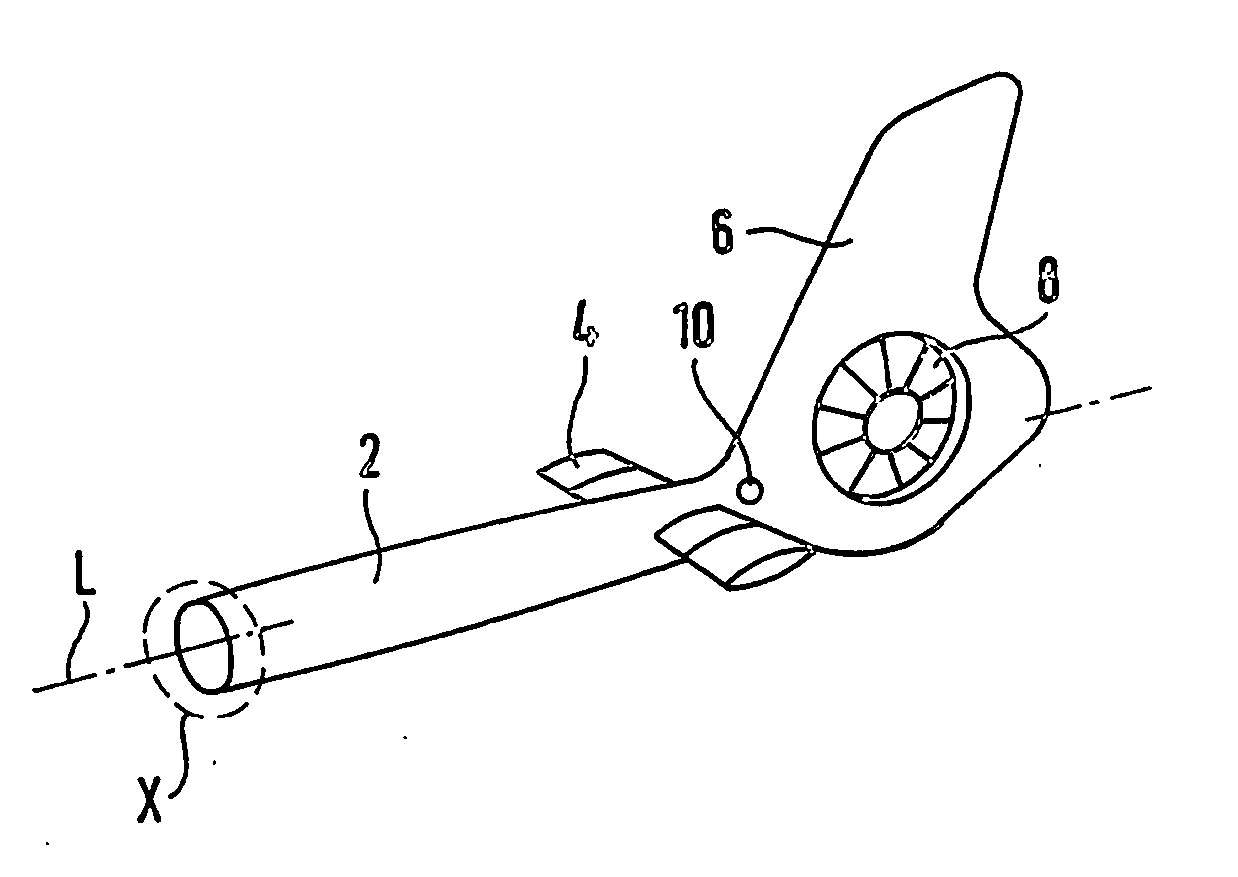Method for damping rear extension arm vibrations of rotorcrafts and rotorcraft with a rear extension arm vibration damping device
- Summary
- Abstract
- Description
- Claims
- Application Information
AI Technical Summary
Benefits of technology
Problems solved by technology
Method used
Image
Examples
Embodiment Construction
[0036] In order to avoid repetitions, in the description below and in the figures, the same parts and components are also designated with the same reference numerals as long as no differentiation is necessary.
[0037]FIG. 2 shows a schematic perspective view of an essential area of a rotary-wing aircraft according to the invention in a first embodiment in order to illustrate a method according to the invention in a first embodiment. FIG. 3 shows a schematic enlarged view of the detail X from FIG. 2. In this case, the rotary-wing aircraft is a helicopter that has a fuselage with a main rotor and a drive means, a cockpit and passenger cabin area that is integrated into the fuselage as well as a tubular tail boom 2 that is arranged on the fuselage. The fuselage and the tail boom 2 are made essentially of fiber composite materials such as, for example, carbon fiber composite materials. For the sake of clarity, FIG. 2 shows only the tail boom 2 with its add-on components. In this case, th...
PUM
 Login to View More
Login to View More Abstract
Description
Claims
Application Information
 Login to View More
Login to View More - R&D
- Intellectual Property
- Life Sciences
- Materials
- Tech Scout
- Unparalleled Data Quality
- Higher Quality Content
- 60% Fewer Hallucinations
Browse by: Latest US Patents, China's latest patents, Technical Efficacy Thesaurus, Application Domain, Technology Topic, Popular Technical Reports.
© 2025 PatSnap. All rights reserved.Legal|Privacy policy|Modern Slavery Act Transparency Statement|Sitemap|About US| Contact US: help@patsnap.com



